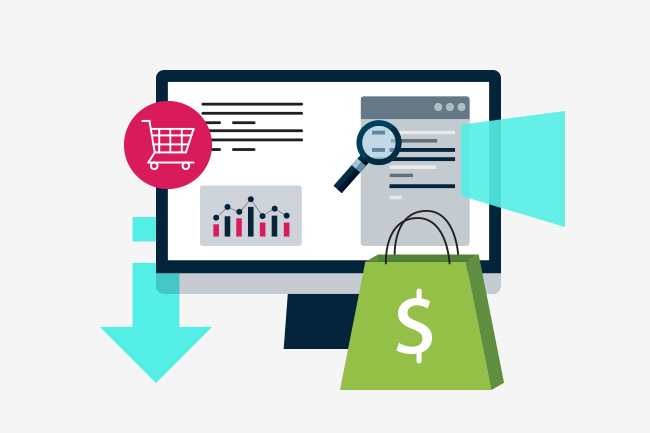
Having a strong Search Engine Optimization (SEO) strategy is essential to enhancing your Shopify store’s discoverability and reach. With SEO, you can generate organic traffic that leads to increased sales and long-term growth opportunities. Research indicates that 53% of website traffic comes from organic searches, emphasizing the importance of an effective SEO strategy. For Shopify stores, optimizing your storefront ensures potential customers can easily find your products, boosting conversion rates and positioning your store ahead in the highly competitive eCommerce landscape.
What is Shopify SEO?
Shopify SEO refers to the process of optimizing your Shopify store to rank higher in search engine results pages (SERPs). This involves improving the visibility of product pages, collections, and blog entries, along with addressing technical SEO aspects. Shopify SEO encompasses keyword optimization, streamlined navigation, and enhanced user experience, making it easier for shoppers to discover and purchase your products.
In essence, Shopify SEO is more than just increasing traffic—it’s about attracting the right audience and fostering a seamless shopping experience that leads to higher sales and repeat customers.
Why Do You Need a Strong Shopify SEO Strategy?
- Increased Visibility: Higher rankings mean more exposure to your target audience.
- Cost-Effective Marketing: SEO provides long-term results without recurring ad spend.
- Enhanced User Experience: An optimized store offers faster loading times, easy navigation, and mobile responsiveness.
- Higher Conversion Rates: Organic traffic often converts better as users actively search for specific products.
- Competitive Edge: A strong SEO strategy can help you outrank competitors and claim a larger market share.
Shopify SEO Fundamentals
To successfully optimize your Shopify store, focus on the following areas:
1. Keyword Research and Optimization
- Keyword Selection: Use tools like SEMrush, Ahrefs, or Google Keyword Planner to find relevant keywords with high search volume and low competition.
- On-Page Optimization: Incorporate primary keywords into product titles, meta descriptions, and content naturally to improve click-through rates.
2. Optimize Site Structure and Navigation
- Clear Navigation: Structure your site into logical categories and subcategories.
- Internal Linking: Link related products and content to enhance user navigation and distribute link equity.
3. Mobile Optimization
- Responsive Design: Shopify’s themes are mobile-friendly, but ensure your site looks and works seamlessly on mobile devices, as mobile usability is a ranking factor.
4. Page Speed Optimization
- Use tools like Google PageSpeed Insights to improve loading times.
- Compress images, minify CSS/JavaScript, and use a content delivery network (CDN) for better performance.
5. Image Optimization
- Image Compression: Reduce file sizes without losing quality.
- Alt Text: Include descriptive alt text with keywords to improve accessibility and SEO.
6. Content Optimization
- Unique Content: Write detailed, engaging, and informative product descriptions.
- Blog Content: Use Shopify’s blog feature to publish posts targeting long-tail keywords.
7. Utilize Shopify SEO Apps
- Tools like SEO Manager, Plug in SEO, or Smart SEO can simplify and automate your SEO efforts.
8. Schema Markup
- Implement structured data (JSON-LD) for products, reviews, and FAQs to enable rich snippets in search results.
9. Meta Tags Optimization
- Write compelling meta titles (55-60 characters) and descriptions (150-160 characters) that include keywords to attract clicks.
Off-Page SEO for Shopify Stores
Building your online presence extends beyond your website. Here’s how you can enhance your Shopify store’s SEO with off-page tactics:
- Backlink Building: Collaborate with influencers, bloggers, and industry websites for backlinks to improve authority.
- Social Signals: Share content on social media platforms to drive traffic and boost brand visibility.
- Local SEO: Optimize for local searches by creating a Google Business Profile and gathering customer reviews.
Key SEO Metrics to Monitor
Tracking performance is vital to refining your SEO strategy. Focus on these metrics:
- Organic Traffic: Monitor the volume of visitors from search engines.
- Keyword Rankings: Track your store’s position for target keywords.
- Conversion Rate: Measure the percentage of visitors who make purchases.
- Bounce Rate: Evaluate how many visitors leave after viewing one page.
- Backlink Profile: Assess the quantity and quality of links pointing to your site.
Future-Proofing Your Shopify SEO Strategy
The eCommerce landscape evolves rapidly, so staying ahead is critical:
- Voice Search Optimization: Optimize for conversational, long-tail keywords to cater to voice search users.
- AI and Automation: Leverage AI-powered tools for analytics and automated SEO tasks.
- Content Trends: Continuously publish fresh and engaging content to maintain relevance.
A strong Shopify SEO strategy is indispensable for driving organic traffic, increasing sales, and securing long-term growth. By optimizing keywords, improving site performance, and monitoring key metrics, your Shopify store can stand out in search results and attract your target audience. For best results, consider working with a professional SEO agency to fine-tune your strategy and stay ahead in the competitive eCommerce space.

Hi, this is a comment.
To get started with moderating, editing, and deleting comments, please visit the Comments screen in the dashboard.
Commenter avatars come from Gravatar.